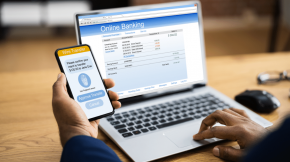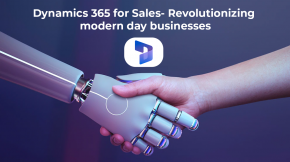How Real-Time Analytics Changes Everything for Your Business
Remember the 2008 financial crisis?
The world economy was on the brink of collapse. Banks and financial institutions had no clue how bad the situation was until it was already too late. They were relying on outdated data. If they had access to real-time analytics, things could’ve been very different. They could have seen the problems earlier, reacted faster, and maybe, just maybe, stopped the disaster before it got out of hand. This situation is a lesson. Today, the real-time flow of data is no longer a luxury; it’s a necessity. In finance, healthcare, manufacturing, or even retail, real-time data analytics can contrast between success and failure. So, what is real-time analytics, and how can it change the way you run your business?
What is Real-Time Analytics?
Let’s break it down simply. Real-time data analytics means you are getting instant insights from your data as soon as it is generated. No waiting. No delays. You see what’s happening right now.
For example, if you’re managing a large e-commerce platform, you want to know which products are selling this second, not what sold last week. If a cyberattack is happening, you need to know the moment it starts, not when it’s already over.
Now, you might ask, “How is this different from what I’m already doing?” Well, most companies rely on batch processing. They collect data over time (maybe hourly, daily, or weekly) and analyze it later. But by the time you get the information, it’s stale.
In real-time analytics, data is streamed continuously and analyzed as it happens. Think of it like watching a live sports game versus seeing the highlights. You want to be in the game, not just reading about it later.
Why Real-Time Data Analytics Matters More Than Ever
Let me paint you a picture. You’re a banking executive. A customer is making a large transaction—more than usual. Maybe it’s a fraudulent transaction, but you won’t know until your system processes it later. By then, the money is gone.
Now, imagine if you had real-time data analytics. You’d know instantly. You could stop the transaction before it even happens. You’d protect your customer and your business. That’s the power of real-time data analytics.
In healthcare, it’s even more critical. Imagine a patient in the ICU. Their vital signs are monitored constantly. A small change in their heart rate or oxygen levels could mean life or death. With real-time analytics, doctors can get instant alerts and act fast to save lives.
Batch Data vs. Real-Time Data: What’s the Difference?
You might wonder, “Why can’t I just use batch data?” Well, let’s think of it like this:
- Batch data is like checking the weather report yesterday. It tells you what happened, but it’s not useful for right now.
- Real-time data is like looking out the window. You know exactly what’s going on at this very moment, and you can decide if you need an umbrella now.
In industries like finance, healthcare, and supply chain management, waiting isn’t an option. Decisions need to be made based on current data, not old data.
How Does Real-Time Analytics Work?
Okay, now let’s dig a little deeper. How does this magic happen?
- Data Is Collected Instantly Your systems are constantly generating data—transactions, sensor readings, user interactions, etc. In real-time analytics, this data is immediately captured from multiple sources.
- Data Is Processed on the Fly Instead of waiting for the data to pile up, it’s processed while it’s still fresh. Imagine you’re running a food delivery service. You don’t want to wait for an hour to see how many orders were placed. You need to know the number of orders, the delivery times, and any delays right now.
- Immediate Insights Are Delivered Once processed, the data is quickly transformed into insights. You can see it on dashboards, receive custom alerts, or use the data to trigger automated actions. For example, when a machine in your factory starts overheating, real-time analytics can trigger an automatic shutdown to prevent damage.
Real-Time Analytics Database: Why You Need One
Now, you might be thinking, “Can’t I just use my current database?”
Not really. Traditional databases—the ones designed for online transaction processing (OLTP)—are great for handling transactions. They’re fast when you’re processing a single sale or updating a customer’s profile. But when it comes to analyzing huge volumes of data in real time, they simply can’t keep up.
You need a real-time analytics database, which is built specifically for speed and scale. These databases can handle millions of events per second and give you insights in milliseconds. Imagine trying to run LinkedIn or Uber without a real-time analytics database. It wouldn’t be possible. These companies rely on real-time data to deliver instant insights to users—whether it’s showing who viewed your profile or tracking the location of your Uber driver.
Real-Time Data, Historical Data: Bringing It All Together
Here’s another powerful thing about real-time analytics: It doesn’t just work with real-time data. It also combines historical data.
For example, let’s say you run a retail business. You want to know how today’s sales compare to last year’s sales on the same day. With real-time analytics, you can instantly see live data and compare it to historical data in one view. This lets you make smarter decisions, faster.
The Benefits of Real-Time Analytics
Here’s why real-time analytics is a game-changer for your business:
- Stay Ahead of Risks Whether it’s detecting fraud in banking or predicting machine failures in manufacturing, real-time analytics helps you catch problems before they spiral out of control.
- Personalize Customer Experiences In retail or e-commerce, you can use real-time data to offer customers personalized recommendations the moment they’re browsing your site. This creates a better shopping experience and increases sales.
- Improve Operational Efficiency In industries like logistics and supply chain management, real-time analytics helps you optimize routes, reduce delays, and manage inventory more efficiently.
- Make Smarter Decisions, Faster With real-time data, you don’t have to rely on gut feelings or old reports. You have the latest information at your fingertips, so you can make informed decisions in real time.
When Do You Need Real-Time Analytics?
Not every business needs real-time analytics. But if you answer “yes” to any of the following, it’s time to consider it:
- Do I need to react to data within seconds? If you’re in finance, healthcare, or manufacturing, you can’t afford delays. Real-time analytics lets you act on information the moment it’s available.
- Do I have large volumes of data coming in constantly? If you’re handling millions of transactions, customer interactions, or sensor readings, real-time analytics helps you keep up with the data flood.
- Do I need to combine real-time data with historical data? If you want to compare what’s happening now with trends from the past, real-time analytics does this seamlessly.
Real-Time Analytics Use Cases: Industry Examples
- Finance: Detecting suspicious transactions in real time to prevent fraud.
- Healthcare: Monitoring patient vitals and triggering immediate alerts for doctors.
- Manufacturing: Using sensors to predict and prevent machine breakdowns.
- Retail: Offering personalized product recommendations to customers in real time.
- Logistics: Optimizing delivery routes based on current traffic conditions.
The Final Word: Why You Shouldn’t Wait
Having real-time insights gives you a major competitive advantage. It’s like having a superpower that lets you see what’s happening right now, so you can act faster, smarter, and more strategically.
Don’t wait until you’re left behind, relying on old data while your competitors are making real-time moves.
If you’re ready to see how real-time analytics can transform your business, let’s talk about your needs.
Key Takeaways:
- Real-time analytics means getting instant insights from data as soon as it’s generated.
- It’s critical for industries where every second counts, like finance, healthcare, and manufacturing.
- Unlike batch data, which collects and processes data at intervals, real-time data gives you live updates.
- A real-time analytics database is essential for handling large volumes of data quickly.
- It’s not just about real-time data—combining it with historical data lets you make better decisions.
Ready to make real-time decisions? Let’s discuss how real-time analytics can help your business. Get instant insights and leap ahead of the competition.












